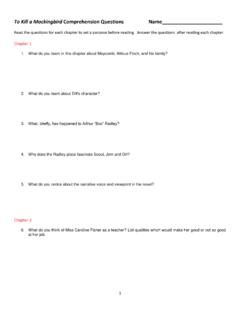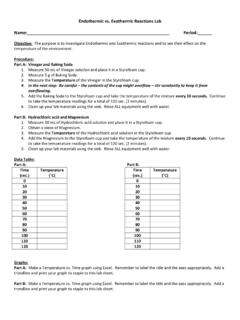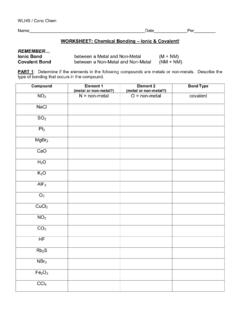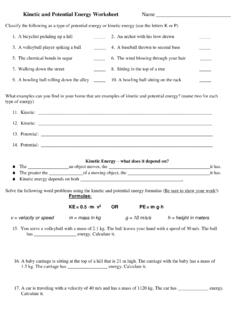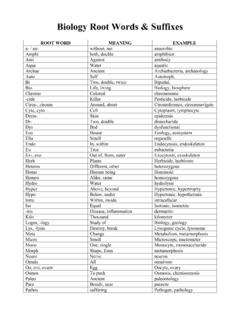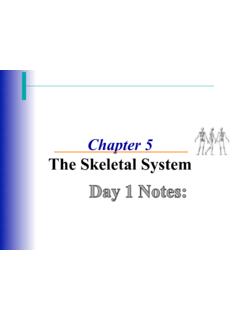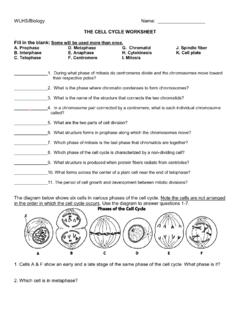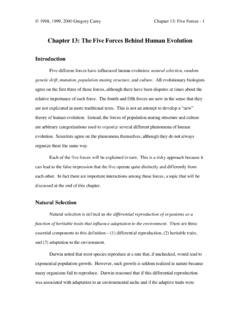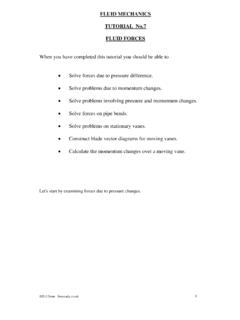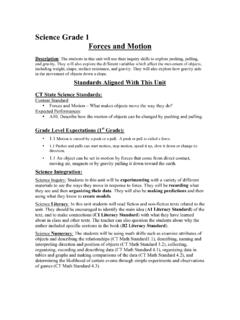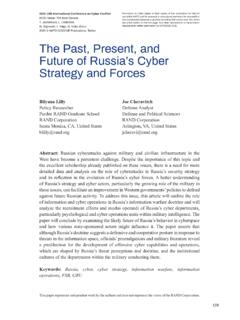Transcription of Centripetal vs. Centrifugal Forces: AP Human Geography ...
1 Centripetal vs. Centrifugal Forces: AP Human Geography Crash Course Countries today face a myriad of issues that threaten to divide its citizens. Religious differences, for example, can split people of the same culture. Differences in language can be a cause for unrest, and may require resolution by the central government. Cultural diversity in many countries is deeply rooted and can create powerful divisions within the population. Divisions are a reality in any country, but there are also forces that unite countries and strengthen the populace because of a strong love of and loyalty to their country.
2 This AP Human Geography study guide will explore those forces that divide ( Centrifugal ) or unify ( Centripetal ) a country. We will define Centrifugal and Centripetal forces and how they can originate in political, economic or cultural dimensions. We will also discuss why these two forces are vital to the survival of the state. Both Centrifugal and Centripetal forces exist in the same dimensions, and examples are in the areas of religion, language, ethnicity, government, and physical Geography . This study guide will help you understand the definition Centrifugal and Centripetal forces and give you examples of how each force can unite or divide a state.
3 What Makes a State a State? The concepts of political Geography and the state are important to understand when we discuss Centripetal and Centrifugal forces, because they may affect the future of a country. In the context of Human Geography , please note that term terms state and country are synonymous and are used interchangeably. Before we look at forces that can divide or unite a country, let s review the concepts of political Geography and the state. Political Geography is how humans define and control land and its resources through the establishment of states.
4 Our planet is divided into political units called states or countries. Each country has defined borders, which have set boundaries, and are organized into a political unit, ruled by an established government that has control over its internal and foreign affairs. Countries occupy a defined territory and have a permanent population. A state has sovereignty, which means independence from control of its internal affairs by other states. A nation is a group of unified people with a common culture. The Kurds would be an example of a nation without a state of their own.
5 Nation-states describe a state comprised of a population with over 90 percent of a particular culture. Japan and Lesotho are good examples of nation-states. A concern of any country is how to stay sovereign in the face of forces that may divide its citizens. States draw on unifying forces to rally its citizens behind forces common to its national identity. A federal state gives local political units like states or provinces within that country a measure of power. Conversely, unitary states are characterized by a strong central government.
6 Divisive forces threaten a country s sovereignty by dividing the country and breaking down the central government. They are also forces that unite and bind a country together like a common faith or a shared ideology. Let s look at what those forces are. Centripetal vs Centrifugal Forces Defined The theory of Centripetal and Centrifugal forces is associated with political geographer Richard Hartshorne. He argued that the integration of a state s geographical area involved two competing forces. Centrifugal forces that pull people apart, and Centripetal forces that bring people together.
7 These forces can limit interaction, producing regionalism and creating dissimilarity among people of a country. So, what stops a country from falling apart? That country must have Centripetal forces of greater magnitude than the Centrifugal forces. Countries are susceptible to forces that divide or unite them. Centripetal forces unite a country where Centrifugal forces tend to divide. When the Centripetal forces dominate a country, it will stand firm in the face of global challenges and struggles, as well as conflicts within their borders.
8 When internal Centrifugal forces threaten to divide the country, the central government may break down and fail. A strong and charismatic leader can mitigate this division. National institutions and symbols can also rally a country together in spite of division. Nationalism, or the strong love of and loyalty to one s country, is also a powerful Centripetal force and can create solidarity among the populace. What are Some Examples of Centripetal Forces? We know that Centripetal force is an attitude that unifies people and enhances support for a state.
9 In other words, Centripetal forces from within a state unite it and keep the country together. They stabilize and strengthen the country and create a sense of unity. Let s look at examples of Centripetal forces and why they are important to the state. National identity is a strong Centripetal force in the political dimension. A popular way of showing national identity is through the use of icons and expressions, depicted in flags, national anthems, and sports teams. These symbols reinforce a national awareness and instill in the population a sense of pride and loyalty.
10 An example of a Centripetal force would be during the 1995 Rugby World Cup. Then president of South Africa, Nelson Mandela used the Springboks, the national rugby team, to help unite a divided nation. South Africa had just broken free from more than 400 years of racial inequality. Centripetal forces in the economic dimension unite a country by ensuring the population that there are sufficient resources to support the long-term stability of the state. A first-class infrastructure would be a Centripetal force in a state. When there is a good transportation system that is available to all citizens, all the resources of the country are accessible, making life easier for the everyone.
